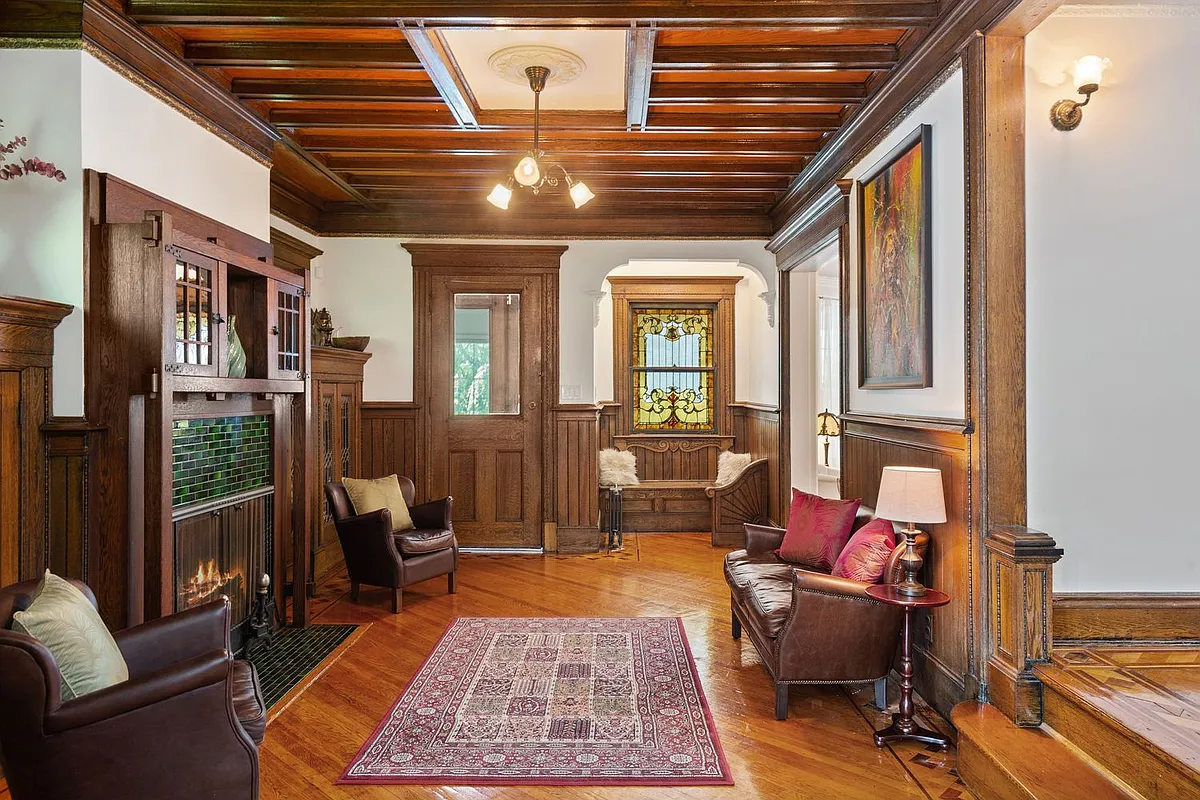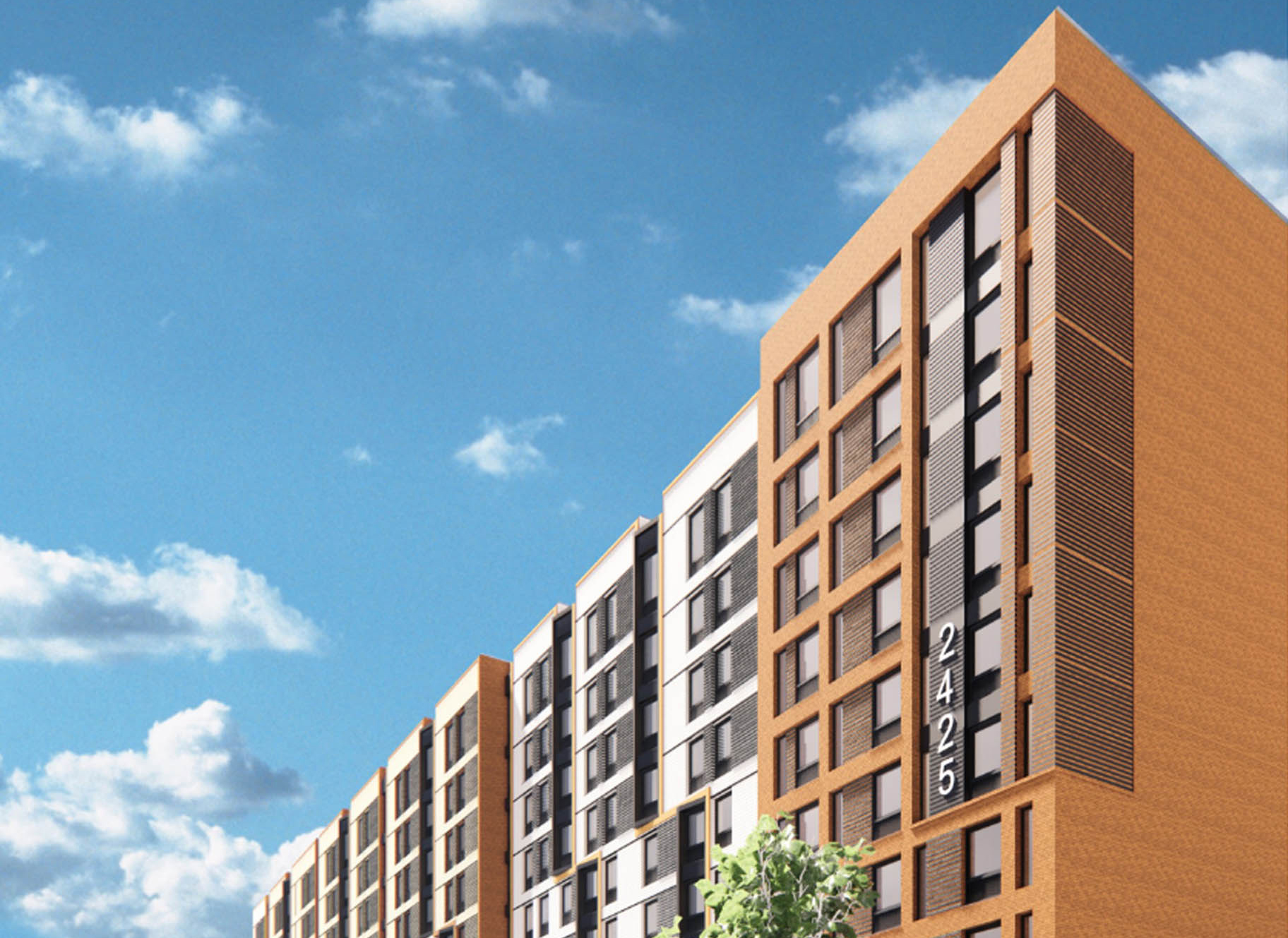The Hot Seat: Page Travelstead
Welcome to The Hot Seat, where we talk to folks in Brooklyn real estate, architecture, development and the like. Introducing Page Travelstead, project manager of affordable housing development for the 5th Avenue Committee. Brownstoner: What neighborhood do you live in, and how’d you end up there? Page Travelstead: I live in Downtown Brooklyn, in an…


Welcome to The Hot Seat, where we talk to folks in Brooklyn real estate, architecture, development and the like. Introducing Page Travelstead, project manager of affordable housing development for the 5th Avenue Committee.
Brownstoner: What neighborhood do you live in, and how’d you end up there?
Page Travelstead: I live in Downtown Brooklyn, in an old St. John’s Law School Building near Borough Hall. Having grown up in Cobble Hill in the late 70s and 80s, it is fair to say there wasn’t much charm in Downtown Brooklyn, but things have really changed. The city has made a concerted effort to improve the streetscape with plantings and adding bike lanes. It is a much friendlier place than it used to be. Of course, it is impossible to talk about the rebirth of Brooklyn without mentioning the influx of young people and residential development. I love the mix of old and new retail along Atlantic Avenue and Court Streets, and although my nursery school is now a Rite Aid, I still get my spinach and meat pies at Damascus Bakery. I lived on 108th St while attending Columbia’s Masters in Real Estate Development Program, and while Riverside Park was wonderful, I came back to Brooklyn as soon as I graduated in 2004. I am a Brooklyn girl through and through.
BS: Can you tell us a bit about Fifth Avenue Committee? And what is your role as senior project manager?
PT: Fifth Avenue Committee (FAC) is a non-profit community development organization that began in 1978 with the goal of advancing economic and social justice by building vibrant and diverse communities. FAC develops and manages affordable housing and community facilities, creates economic opportunities, organizes residents and workers, offers student-centered adult education, and combats displacement caused by gentrification. FAC develops all types of affordable housing – both new construction and renovations, small one- to four-family buildings, to our latest 10 story, 80-unit cooperative. We develop housing for the neediest of New Yorkers – very low income and special needs individuals and families – but also traverse the income spectrum up to middle income with market rate components in select projects.
At FAC, my role as Senior Project Manager involves running two to three affordable housing development projects simultaneously, each in different stages of the development process. My focus on all projects is the budget and schedule, but I am also heavily involved in the design as well. The goal is to keep the projects running smoothly – coordinating with our government and private financing partners, staying in touch with our elected officials, neighbors, and the community at large, and ensuring the projects’ sustainability goals are met. I make sure that all of the consultants, from the architects and engineers, to the contractors and sales agents, are communicating with each other effectively, and moving each project forward. The best part of project management for me is that every day is a new challenge, and a new focus. It never gets boring, and at FAC, everyone is always willing to roll his or her sleeves up and get the job done.
After the jump, Page gives us her opinions on the components of a successful market and affordable rate development, talks about affordable housing requirements and incentives, and shares her favorite property in Red Hook….
BS: What projects are you currently overseeing?
PT: I am currently finishing up Atlantic Terrace, an 80-unit mixed-income cooperative in Fort Greene that was completed in May. We were fortunate to have an overwhelming response for our affordable units and great sales on the market rate side, but that’s not where the work ends. It has taken quite a bit of teamwork to get where we are today, with over 80% of our units sold across all income tiers. There have been a steady stream of closings and move-ins all summer, and it has been really satisfying to watch the project grow from a construction site into a home for so many wonderful people.
We also have begun to work with a church in Flatbush to revitalize their site, incorporating a new church space for them into the ground floor of a new supportive housing building. I am really excited about this project – we had a great response to the architectural RFP we put out this spring, and we are moving into the design phase shortly. This will be another beautiful and sustainable supportive housing project that both FAC and the church can be proud to welcome into the neighborhood.
BS: What’s your opinion on development incentives that encourage new affordable housing developments? Are these incentives the best way to secure affordable units in NYC where they wouldn’t be otherwise available? Are there other ways we can make sure affordable housing remains in the borough?
PT: This is a volatile question in NYC real estate, and there are strong opinions on all sides. I firmly believe in the need to require affordable housing within new developments if there are any government subsidies or tax breaks involved. It is fine if a developer would like to put up a 100% market rate building and not take advantage of any incentives, but if the government is involved, then there should be affordable housing produced. Economic diversity is too important to the health of NYC to have the City or State sponsor development without creating housing opportunities across all income levels.
Of particular concern in the neighborhoods where I live and work is the Inclusionary Housing Program. Not one of the buildings constructed after the Fourth Avenue re-zoning took advantage of the inclusionary bonus, which has created a net loss of affordable units for South Brooklyn. This tells us that either the bonus was not large enough or that City re-zoning plans should include affordable housing requirements. I think that if the provision of affordable housing were required, land prices would be less wildly inflated after the re-zoning, allowing developers to build mixed income buildings and make a reasonable return.
I think the most successful mixed-income developments, whether they are an 80/20 or 25/75, distribute the low, middle and market units throughout the building. No one should know from the color of the front door, or which floor the apartment is on, that this is a “subsidized unit”. But we also need to remember that affordable housing is not just about development, but also about preservation. Whether it’s refinancing affordable projects that are reaching the end of their regulatory periods, or making sure that tenant based subsidies like Section 8 are renewed every year, we can’t continue to lose units and affordability when it is so challenging to create new ones.
BS: What are the factors that contribute to a successful development that offers both market-rate and affordable-rate units like Atlantic Terrace has done?
PT: I believe that the key to creating a truly successful mixed income community is attracting purchasers that believe in a mixed-income model right at the start. Don’t get me wrong, we have great layouts, and beautiful finishes, but you should buy at Atlantic Terrace because you love that the hallways of the building are a reflection of the Brooklyn sidewalks we adore- energetic, diverse, welcoming and creative. We have a great marketing and sales team that helps us communicate that message and educate potential purchasers on the benefits of living in a mixed income development.
It’s also important to define success using a few other measures – while we aim to exceed expectations on the standard metrics of schedule, absorption, and financial returns that most developers use, we also know we have a successful project at Atlantic Terrace because it is so broadly supported by our government agency partners and elected officials, each of whom brings decades of expertise and support to the private market forces that also guide our work – so we always try to marry that to the guidelines set by our private lenders. It is really at those intersections where you find the successful mixed income development.
BS: FAC began when the South Slope was highly under-developed, and it’s changed dramatically since then. How do we best help a neighborhood and make it safe for everyone without pushing older residents out?
PT: Economic development and neighborhood preservation do not have to be in conflict. FAC has spent much of its history preserving neighborhood buildings, while keeping rents low for existing tenants, and offering low and middle income rents for newcomers. We have successful local retailers that not only help subsidize our low income residential units, but they also keep the streetscape vibrant and interesting. Our community development partners throughout the city are helping to keep so many neighborhoods diverse, interesting, and fun by channeling economic development incentives to local businesses to help them thrive. And in New York City, where real estate development is often about place-making, we enjoy working alongside private landlords and developers that also share our vision. I think you have to ask yourself before you sign a lease with a retailer whether the business plan is right for the building and the block, and whether the rent you are charging will allow them to still be in business five or ten years from now. This is obviously taking a more long term view on success and profit, but we believe that is how you build a successful neighborhood, for new and existing residents. These visions take a lot of time and energy to realize, and we have (and depend on) great support from any number of City Agencies, and our local elected officials to bring them to their fruition.
BS: Finally your favorites: top BK neighborhood, favorite new development, and favorite property in the borough.
PT: This is tough, but I think my favorite neighborhood is Boerum Hill (though Cobble Hill, Carroll Gardens, Fort Greene and Red Hook are close behind!). Naturally, I have to say that Atlantic Terrace is my favorite new project, but if I had to pick one that was not my own, the redevelopment of the Fairway building (by Greg O’Connell) in Red Hook is at the top of the list. I love the reuse of those beautiful warehouse buildings, and it doesn’t hurt that it is one of the most beautiful spots in all of New York. I would say that Brooklyn Bridge Park is my favorite property. The landscape design and the plan are so wonderful, we are there almost every weekend with our daughter, and I would spend every day in that water park if I could. I also have to mention the Brooklyn Botanical Garden – it’s a longtime favorite and our favorite spot to take out-of-town guests.






What's Your Take? Leave a Comment